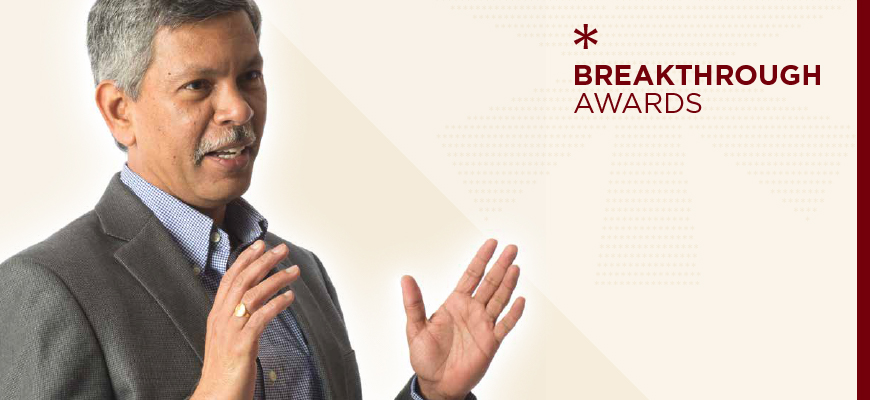
Sky high
Oceanographer develops new techniques for satellite-gathered ocean, climate data
Posted on: March 16, 2018; Updated on: March 16, 2018
By Craig Brandhorst, craigb1@mailbox.sc.edu, 803-777-3681
More than 70 percent of the Earth’s surface is covered by oceans, which in turn contain roughly 97 percent of the Earth’s water. As concerns grow about climate change and atmospheric volatility, collecting and measuring data relating to oceanographic phenomena is becoming more critical than ever.
Enter Subrahmanyam “Subra” Bulusu, professor of satellite oceanography and physical oceanography and founder of the university’s state-of-the-art Satellite Oceanography Laboratory.
Using remote sensing technology, Bulusu and his research team are exploring oceanic and atmospheric dynamics, meteorological processes and climate change. Among their endeavors, Bulusu’s team has worked on the retrieval of sea surface salinity data obtained by NASA’s Soil Moisture Active Passive and Aquarius and the European Space Agency’s Soil Moisture and Ocean Salinity satellite missions.
Bulusu has also developed techniques for tropical storm and hurricane detection based on wind data gathered by scatterometer, a type of microwave radar sensor that measures the reflection produced while scanning the Earth’s surface from a satellite.
“In particular, his innovative work on satellite altimetry is well recognized by the community, especially its use for identification of dynamical interactions in the Indian Ocean,” says Yuhe Tony Song, a research scientist at NASA’s Jet Propulsion Laboratory who has known Bulusu for a long time.
Song credits Bulusu’s efforts to retrieve salinity, surface winds and temperature data from satellite missions with advancing the oceanographic research community’s efforts to capture and analyze useful data in a number of areas.
“These areas are crucial to the understanding of the general ocean circulation and to improving ocean climate modeling and prediction,” says Song.
And those efforts have paid dividends for the university, as well. Bulusu has garnered nearly $3 million in funding over 12 years from NASA, the NASA/SC Space Grant Consortium and the Office of Naval Research.
To date, he has also supervised four doctoral students, all of whom are now working in the field, either at the Jet Propulsion Laboratory or the John Stennis Space Center, and is currently supervising two more.
Outside the laboratory, as co-chair of the faculty senate’s ad hoc information technology committee, along with statistics professor John Grego, Bulusu has actively pushed for the university’s investment in computing infrastructure — resulting in the new high-performance computing cluster, Hyperion, which offers 30 times the computing power of previous clusters.
Managed by the university’s Division of Information Technology, Hyperion offers 224 compute nodes, 8 GPU nodes and 8 large memory nodes providing 6,760 CPU cores for researchers requiring specialized hardware resources for research applications.
The university’s flagship high-performance computing cluster is expected to improve research capacity across multiple disciplines.
“I felt Subra was exceptional for his work leading the information technology committee alone,” says Grego. “It has been quite rewarding to learn about his outstanding research mentorship of his students, his grantsmanship and grant review work, and the scope of his professional research and service on international panels and research groups.”